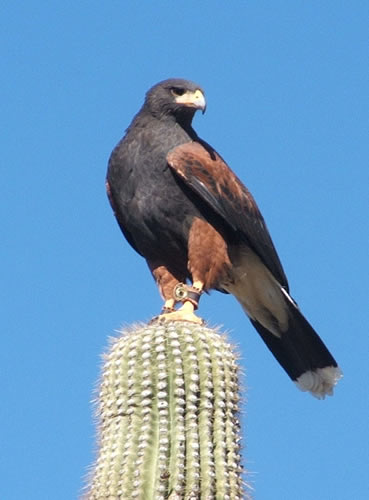Team members
Names / Roles:
-
Nguyen Thuy Linh [Leader]
-
Lee Zi Xuan [Wiki Writer]
-
Jolene Zhang [Researcher]
-
Lau Shinn Yi [Researcher]
Overview
A desert is a region that receives an extremely low amount of precipitation, less than enough to support growth of most plants. Deserts are defined as areas where more water is lost by evapotranspiration (evaporation+plant transpiration) than falls as precipitation. Deserts are located where vegetation cover is very little to almost nonexistent. Deserts take up about one fifth (20%) of the Earth's land surface. Deserts have a reputation for having a low biodiversity, but in reality deserts often have high biodiversity, including animals that remain hidden during daylight hours to control body temperature or to limit moisture needs.



[ Pictures taken from: http://en.wikipedia.org/wiki/Desert#Fauna_and_flora and http://www.google.com.sg ]
Physical Factors

Light : The availability of sunlight in Hot Deserts are intensive, not even a drop of water can be found for months. Cold Deserts lack adequate amount of sunlight. [Extracted from: http://www.only4ukids.com/schoolprojects/life/animals/landvariety/cold_desert.shtml ]
[Pictures taken from : http://www.google.com.sg ]

[Pictures taken from : http://www.google.com.sg ]
Temperature : Usually, hot and dry deserts have the temperature range of 20 to 25 degree Celsius (K). Extreme ones are ranged from 43.5 to 49 degree Celsius (K). Cold Deserts are ranged from -2 to 4 degree Celsius (K). However, the Coldest Desert can get to -70 degree Celsius (K)! [Extracted from: http://www.blueplanetbiomes.org/desert.htm ]
Water : In the desert, there are only a few periods of rain per year. When it does rain in the desert, it can turn into a downpour. Violent rainstorms can also cause flash floods in the desert. After the storm has passed, the desert may not see any rain for weeks or even months. Sometimes when rainstorms fail to wet the desert floor, the rain may even turn to vapor before it reaches the extremely hot ground.



[Pictures and Information extracted from: http://www.mbgnet.net/sets/desert/index.htm and http://inchinapinch.com/hab_pgs/terres/desert/desert.htm ]
Salinity : Seawater are found in Deserts. Therefore, human uses some methods to obtain drinking water. [Examples: http://www.wikihow.com/Make-Water-in-the-Desert ]

[Pictures taken from : http://www.google.com.sg ]
Air : Air in Deserts have high humidity.[Extracted from: http://en.wikipedia.org/wiki/Desert ]

[Pictures taken from : http://www.google.com.sg ]
pH of the Environment : 1 being the most acidic, 14 being the greatest alkaline, and 7 being neutral. It's pH scale rages 1 through 14. [ Extracted from: http://ag.arizona.edu/cochise/mg/soils.htm ]

[Pictures taken from : http://www.google.com.sg ]
Mineral Salts : Mineral salts can be found on the entire surface of the Desert.[Extracted from: http://en.wikipedia.org/wiki/Desert ]
Done by: Jolene, Shinn Yi and Zi Xuan :D
Classification of Living Organisms
1. Producers: Grass, Barrel Cactus, Creosote Bush, Desert Sage, Palm Trees, Saguaro Cactus, Joshua Tree, Desert Lily.






 [Photos extracted from: http://inchinapinch.com/hab_pgs/terres/desert/plants.htm ]
[Photos extracted from: http://inchinapinch.com/hab_pgs/terres/desert/plants.htm ]
2. Primary Consumers: Javelinas, Bighorn Sheep, Kangaroo Rat, Desert Tortoise, Cactus Ferruginous Pygmy Owl, Sonoran Desert Toads, Cactus Wern, Rabbit, Grasshopper.







 [Photos extracted from: http://www.blueplanetbiomes.org/desert_animal_page.htm & http://www.google.com.sg ]
[Photos extracted from: http://www.blueplanetbiomes.org/desert_animal_page.htm & http://www.google.com.sg ]
3. Secondary Consumers: Banded Gila Monster. Bobcat, Lizard, Scorpion, Rattlesnake, Ringtail, Raven, Jack Rabbit.







 [Photos extracted from: http://www.blueplanetbiomes.org/desert_animal_page.htm & http://www.google.com.sg ]
[Photos extracted from: http://www.blueplanetbiomes.org/desert_animal_page.htm & http://www.google.com.sg ]
4. Tertiary Consumers: Coyote, Hawk, Desert Fennec Fox, Mountain Lion, Leopard, Arizona Desert Bear, Desert Monitor, Pharaoh Eagle Owl







 [Photos extracted from: http://www.google.com.sg ]
[Photos extracted from: http://www.google.com.sg ]
5. Decomposers: Bacteria and Fungi
 [Photos extracted from: http://www.google.com.sg ]
[Photos extracted from: http://www.google.com.sg ]
Done by: Jolene :)
Food Web
Create a food web using at least eight of the living organisms listed above. You may wish to use Microsoft PowerPoint to create your food web. Save your food web as a picture. Finally copy and paste your picture in this section of your wiki.

[ All pictures except for the Scorpion picture are extracted from http://www.google.com.sg ] [ Scorpion picture extracted from http://room42.wikispaces.com/Desert+Animals ] (I really did this myself! I did not copy & paste from other websites! ~Jolene)
Interrelationship in Ecosystem
Give at least one example for each of the following relationships in the ecosystem:
- Predator-prey relationship
- Parasitism
- Mutualism
Useful Links
Plagarism is a strongly discouraged.
Include the links of all websites you obtained information from to complete your ecology wiki.
For example:
Wild World @ nationalgeographic.com ( http://www.nationalgeographic.com/wildworld/terrestrial.html )
Comments (0)
You don't have permission to comment on this page.